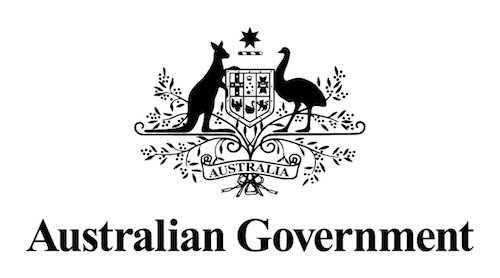Miriam Vale Pig Project
Year: 2016 – 2018
Program: Baffle Reef System Repair
The People

This is a story about a rural community, not just one person or family. It is a story of neighbourly cooperation to deal with a serious environmental issue.
In 2016 funding was approved for a project involving five landholders, adjoining or within a short distance of each other, for a coordinated feral pig control program. This would be carried out on a 9 kilometre section of Baffle Creek near Miriam Vale, and the adjoining lower reach of an immediate tributary, Colosseum Creek.
The funding was made available under the Baffle Reef System Repair program, through the Burnett Mary Regional Group as part of the Australian Government Reef Program.
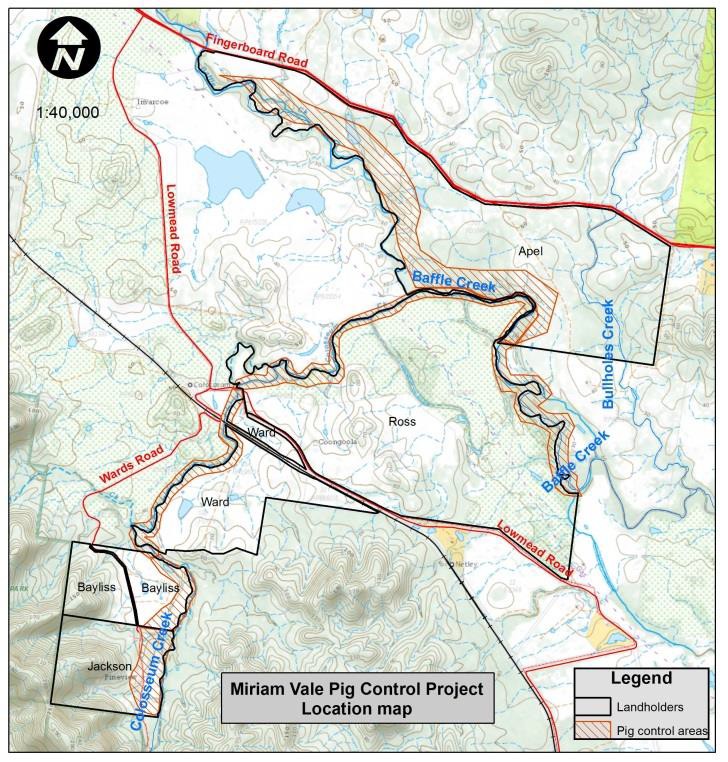
The Issues

Feral pigs have been identified as a serious threat to the riparian zone in many areas of the Baffle Creek catchment. Their activities result in disturbed, and in many cases destroyed, native habitat and endangered vegetation along Baffle Creek and adjoining tributaries.
The connectivity of the control area to the Great Barrier Reef is mapped as high to very high on the Blue Maps data layer.
The vegetation in the control zone along Baffle Creek and Colosseum Creek is classed as ‘endangered – dominant’.
Feral pigs in this area have been observed to be in relatively high numbers, and also showing a fairly constant presence through the adjoining properties
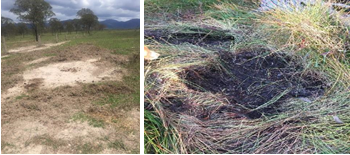
The Project

It was anticipated that involvement of adjoining landholders in a coordinated control program would have a better outcome than sporadic control efforts over individual properties. Contact was made to the five adjoining landholders through an expression of interest program, and their cooperation and involvement was successfully negotiated.
The control program was implemented by Miriam Vale pest animal contractor Reece Muller (CQ Feral Management), using two Jager-pro traps and advanced GPS and camera technology. The project was run over two years, from November 2016 to June 2018.
The funding allocated by BMRG to this project was $16,826, with $4,000 of in-kind investment by the contractor.
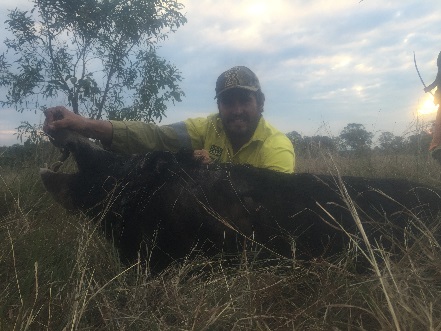
The Result

The spring and summer of 2016 was one of the hottest and driest on record. This weather had an effect on pig numbers, or where they were living. Despite this, 46 pigs were trapped and destroyed by June 2017.
Included in this number were a large proportion of breeding sows, which were taken out of future piglet production.
The total number of pigs trapped and killed over the life of the project was 82.
By the final stage of the project the contractor had observed a significant reduction in damage throughout the control area.
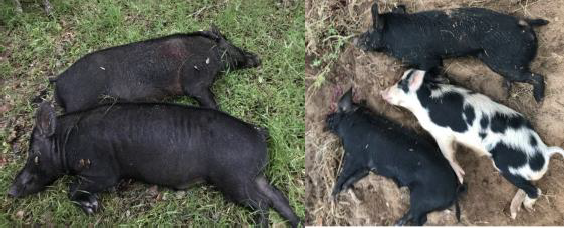
Program Sponsors
This project was supported by the following partners and investors.


